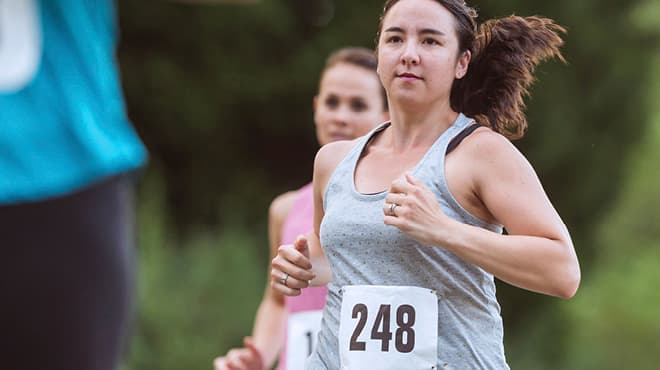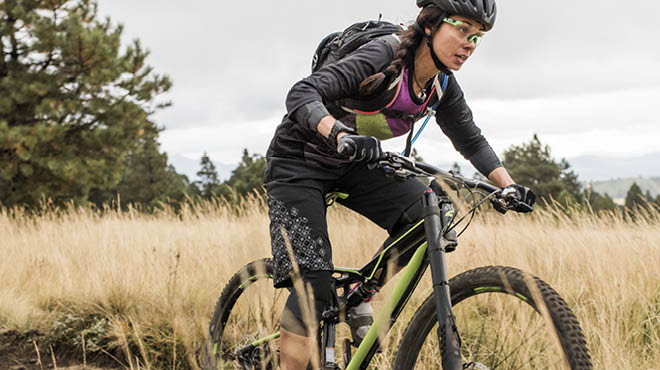Recent Posts
Prevent boredom, injury during physical activity

Have you ever started a new fitness journey only to find yourself bored or suffering new pain in a couple of weeks? At this point, you may be asking, "Is this routine really for me?"
This is common, but you need to find ways to make the process better to overcome these obstacles.
The link between boredom and injuries is strong. As you get bored with a fitness routine, it is easier to skip workouts, take shortcuts with stretching or use poor form. Doing so can increase the risk of injury, which can delay or sideline your exercise goals.
Here are ways to overcome boredom and avoid common injuries:
Combating boredom
If you find the thought of spending another minute on the "dreadmill" or elliptical trainer is just too much, it may be time to set SMART goals and change your exercise routine. Cross-training, which incorporates different types of exercise in your schedule, can challenge and strengthen your muscles and joints that don't get used much during your normal routine.
Here are three ways to change it up:
- Try a new activity.
Cardiovascular training is any activity that increases your heart rate for a set amount of time. Explore a variety of options at home, outdoors and in the gym. You might try walking, running, cycling, swimming, cross-country skiing, stair-climbing or jumping rope. Try one of these 15-minute workouts you can do at home. - Try multiple activities within the same workout.
Many people enjoy a "10-10-10" workout. You start on one machine for 10 minutes, then move to a second machine for the next 10 minutes and finish off with a third machine for the last 10 minutes. The little change of scenery seems to help the minutes fly by. You could even call yourself a triathlete by swimming, biking and running in the same workout. - Try a new routine during your favorite exercise.
Many days of the same routine can lead to boredom, whether you are running, using an elliptical trainer or cross-country skiing outdoors. If you exercise in a gym, many newer fitness machines are preprogrammed with a range of workouts designed to vary the speed, grade or resistance, simulating rolling hills, large mountains or high-intensity intervals. Varying the effort level required not only helps keep you from getting bored, but also can increase your fitness gains. If you exercise outdoors, try a new location or time of day, or exercise with a friend. If you exercise in your home, try to watch your favorite TV shows or binge that latest season to help the time go by faster.
Proper form
Technique and proper form are important when starting a new program. Don't concentrate on the amount of weight you are lifting. Instead focus on how you are doing it. Many people will perform exercises wrong and increase their risk for injury from improper form.
Here are some reminders:
- Keep your knees behind your toes when doing any type of squat.
- Watch your knees in a mirror to make sure they remain parallel and don't move inward when doing squats.
- Stop your elbows from going below your body when doing a bench press.
Common aches and pains
It's normal to feel sore as you begin a new fitness program and use your muscles in new ways. Don't let this soreness stop you from working toward your goals. Stretching, ice, massage, heat and light exercise, such as walking or biking, may help alleviate any discomfort. However, keep moving to keep your muscles loose as you recover. As you progress on your exercise journey, your muscles get stronger, and you will experience less soreness and quicker recovery.
It's important to distinguish between mild soreness and muscle injuries. Sore muscles feel tender, tired or achy. In contrast, a sports injury usually produces sharp, stabbing or deep pains. This pain could linger even after resting. Talk with your healthcare provider if you are experiencing this type of pain.
Here are tips for preventing the most common exercise injuries:
Shoulder pain
Pain in your shoulder could be from the joint itself or from any of the many surrounding muscles, ligaments or tendons. Some common causes of shoulder pain are poor posture; tendonitis, which is inflammation in the muscles from overuse; or rotator cuff injury, which is injury or wear and tear on the tendon tissues of the shoulder joint. You can prevent shoulder pain by practicing proper posture, and performing rotator cuff and scapular strength exercises. One of the most effective ways to accomplish both is by squeezing the muscles between the base of your shoulder blades and guiding them down toward your back pockets.
Knee pain
Similar to shoulder pain, knee pain can be caused by the joint, muscles, ligaments, tendons or bursae around the joint. The severity of knee pain can vary widely, from a slight twinge to pain that interferes with daily activities. A common type of knee pain occurs around your kneecap. This type of knee pain, called patellofemoral pain, is sometimes referred to as "runner's knee" and is common in people who participate in sports that involve running or jumping. It is caused by overuse, injury, excess weight, poor alignment of the kneecap or changes underneath the kneecap. This injury is also common in young athletes, especially female athletes.
You can prevent runner's knee by practicing proper form and mechanics during squatting and jumping activities, as well as performing exercises to stabilize the knee joint and promoting proper alignment of the knee cap.
Shin splints
Medial tibial stress syndrome, commonly called shin splints, is pain in the tibia, which is the large bone in the front of the lower leg. With this injury, shins throb and ache following running or jumping activities. Swollen, overused muscles are often the cause. However, other factors also can contribute, including flat feet and weakness in the hips or core muscles. Shin splints may be confused with or mimic stress fractures, which are more concerning.
You can prevent or correct shin splints using various options. Rest, ice and orthotics are most commonly used to reduce inflammation and improve mechanics during running and jumping activities. Stretching is important to care for and prevent this injury. Proper footwear is important. Don't hesitate to ask your healthcare provider about what type of shoe is right for you. Your healthcare provider should evaluate persistent shin pain, or significant pain at rest or when not performing activities.
Back pain
Muscle strains and disk issues are common causes of back pain. Usually, muscle strains begin as a sharp pain that dulls gradually and is sometimes accompanied by a muscle spasm. Poor form during lifting activities causes many muscle strains. Disks are the cushions between the bones in your spine. Bulging or ruptured disks can be caused by poor lifting mechanics or prolonged positioning, particularly in a flexed posture. Symptoms of disk issues include pain in the back that can cause spasms, muscle weakness, or numbness and pain that radiates into the leg or arm.
Most back pain — even severe back pain — goes away on its own in four to six weeks with self-care, such as rest, heat or ice, over-the-counter pain medication and exercise. A general stretching routine is important when dealing with back pain. Maintaining good flexibility in your hamstrings, quads, hip flexors and lower back can help, along with exercises to strengthen your core muscles. Talk with your healthcare provider if your back pain persists or is accompanied by weakness or numbness, or spreads down your legs or arms.
Troy Hoehn is an athletic trainer in Orthopedics and Sports Medicine in Mankato, Minnesota.




